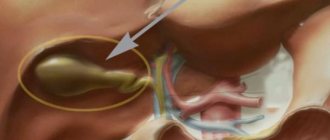Author of the article
Arthur Viniaminovich Artemyev
Urologist, gynecologist, practicing specialist
Articles written
64
Contact the author
Malignant tumors today can be diagnosed and can be adequately treated in the early stages of the disease. Bladder cancer in women is not the most common pathology, but it is important for every woman to understand how to recognize it and consult a doctor in time. The age group at risk is those who have reached 40 years of age, as well as girls and women who often suffer from inflammation of the urinary system.
Description of the disease
Urinary cancer is an oncological pathology. With it, a malignant tumor develops on the wall of the bladder, inside the cavity. Women are 4 times less susceptible to this disease than men. The type of disease depends on which cells have transformed into malignant ones. More specifically:
- Carcinoma or cancer of the transitional cell category. This is the most common form.
- Squamous cell cancer. The main cause is cystitis, which most often develops in women.
- The most common type is adenocarcinoma.
There is also a classification depending on the form of growth - invasive and non-invasive. In the first case, cancerous tissue grows to the wall of the bladder and cellular structures in the vicinity. The second option is that the tumor, in the process of growth and development, extends beyond the bladder.
Treatment methods
Depending on the prognosis, the shape of the tumor and its size, an individual method of therapy is selected. It is important to carry out a preliminary examination and draw up the most favorable plan.
Surgical
Surgical treatment in the form of transurethral resection is very successful among young patients. The procedure is performed under general anesthesia and involves inserting instruments through the urethra. Low-traumatic surgery allows you to avoid many complications that arise during laparotomy. TUR is prescribed to patients with bladder carcinoma no higher than grade 2. At stage 3, this type of treatment is used only to reduce clinical manifestations and alleviate the patient’s suffering.
Bladder removal. Radical treatment is prescribed for large bladder cancer or stage 3-4. Partial cystectomy has practically not been practiced in recent years. Doctors refuse this treatment method, since after it a recurrence of bladder cancer often occurs. For larger tumors, radical cystectomy is recommended.
The patient's quality of life after such treatment leaves much to be desired. The urethra is removed along with the bladder cylinder. In women, the internal sex glands are excised, and in men, the prostate with seminal ducts is excised. Further excretion of urine is possible only through the skin. To do this, a replacement catheter is installed in the patient.
The possibilities of plastic surgery in recent years have made it possible to form a bladder from intestinal loops. It is important that this organ is also not affected by cells prone to malignancy.
Chemotherapy
A hyperechoic mass found within the bladder during an ultrasound scan is not necessarily cancer. Therefore, before prescribing a serious course of treatment to a patient, it is necessary to clarify the origin of the pathology. Cytoscopy, supplemented by biopsy, allows you to determine the morphology of the pathological process.
In the early stages of tumor development, intravesical chemotherapy shows good results. It involves administering medications through the urethra and using them to treat the walls of the bladder.
Classical intravenous chemotherapy is usually prescribed after surgical treatment, but can be used independently or simultaneously with intravesical chemotherapy. It is important to evaluate the expected benefits and compare them with the risks.
Radiation therapy for bladder tumors is recommended before surgery. The procedure allows you to slow down the growth of the tumor, and in some cases reduce its diameter. Radiation is also recommended for patients with bone metastases. The procedure significantly relieves pain. Along with palliative treatment, it shows good results.
Folk
Many patients try to cure bladder tumors with folk remedies. Plant substances help cleanse the body, remove toxins, and saturate them with useful elements. They have a beneficial effect on the psycho-emotional state of health and have a colossal placebo effect. Herbs and plants strengthen the immune system and have an anti-inflammatory effect. However, this is where their positive properties end.
Experts confidently say that it is impossible to cure a tumor in the bladder using non-standard means. Moreover, some herbs are prohibited for oncology, as they can cause the spread of malignant cells and accelerate their growth. Therefore, before you decide to take any decoctions, potions or other herbal products offered by alternative medicine, you should always consult your doctor.
Causes
At the moment, medicine cannot answer why women develop this cancer. And numerous opinions on forums have no scientific basis - only guesses. So far, no chromosomal changes or mutations have been discovered that would indicate the development of this particular type of tumor.
Important! The influence of genetic factors on the development of the disease is currently being actively studied.
But there are certain circumstances that lead to a high risk of developing cancer. The following are called risk factors:
- Smoking. During prolonged smoking, not only the respiratory organs are under attack, but the entire body. When harmful toxins enter the body, they decompose, and the results of this decomposition are eliminated from the body through urine. Toxins from cigarettes have a negative effect on the walls of the bladder, causing inflammation. As a result, a mutation occurs and the risk of developing cancer increases.
- Harmful substances. If the body is exposed to chemicals for a long time, for example, in hazardous industries, their effect on the body is the same as that of cigarette smoke.
- A large number of fried foods in the diet. Carcinogens that are formed as a result of frying affect the development of oncology, including in the bladder. Since carcinogens are also excreted in the urine, which means they pass through the bladder.
- Chronic pathologies of the bladder. Such pathologies include: urostasis, urolithiasis, inflammation of various kinds, polyps, papillomas. The latter is a benign tumor, which, however, has a significant chance of transforming into a malignant one.
- Age factor – the risk of the disease is higher in older people.
- Effect of ionizing radiation.
- Living in an area with widespread schistosomiasis. This is an infectious pathology caused by parasites in the human body.
- A provocateur can be the habit of frequently holding back urination and tolerating it.
- Overactive bladder. There is a desire to visit the toilet more than 8 times a day. This may be the result of inflammatory processes.
Reasons for development
Most often, this type of disease occurs in patients aged 40-65 years. Moreover, men are 2-3 times more likely than women to suffer from this type of pathology.
Hereditary factors do not play a significant role in the development of bladder cancer. And the main causes of oncological formations include:
- Chronic inflammatory processes in the bladder. Most often this is chronic cystitis;
- Sexually transmitted diseases;
- Congenital bladder defects;
- Smoking. This bad habit increases the chances of bladder cancer by 5 times;
- Constant contact with biological and chemical carcinogens such as aniline and other industrial dyes. Cosmetologists, dry cleaners and dentists most often come into contact with such substances;
- The presence of parasites in the genitourinary system, schistosomiasis;
- The habit of abstaining from urination for a long time;
- Long-term and regular use of certain chemotherapy drugs, such as Cyclophosphamide;
- Alcohol abuse;
- Diabetes;
- The effects of radiation on the organs of the genitourinary system.
Alcohol abuse can lead to bladder cancer.
The cause of bladder cancer can also be a person's prolonged exposure to severe stress.
Stages of bladder cancer in women
Like any cancerous tumor, in the bladder it develops in certain stages, and not abruptly. Moreover, at first it is very difficult to detect such a condition, since there are no obvious symptoms. The following stages are distinguished:
- Initial. Malignant cells are localized on the mucous layer of the urinary tract.
- The transition to the next stage is associated with damage to the submucosal layer, sometimes even to the muscles.
- Next comes spread to adipose tissue and the walls of the bladder.
- The nearest organs are involved in the pathological process. In women, this is the uterus, its cervix, vagina, and organs in the abdominal cavity.
- At the last stage, metastasis occurs. Cancer cells can reach organs that are located quite far from the bladder.
If a malignant tumor is detected at a time when it has already begun to metastasize - stages 3, 4, the prognosis for recovery is unfavorable. That is why it is important to know how it manifests itself in the first stages.
Diagnostics
Urine tests for this disease include the following:
- Urine analysis using microscopy.
- Urine culture to rule out infection if suspected.
- Urine cytology.
- Testing for urinary tumor markers.
Conducting laboratory tests of urine
A urine test is done to look for hematuria or infection. Microscopic hematuria from bladder cancer may be intermittent, so a repeated negative urinalysis does not rule out the diagnosis.
Cytology
Urine cytology is extremely valuable and is often used for diagnosis. Suggestive urine cytology should prompt the urologist to perform a cystoscopy and possibly a bladder biopsy. Patients with severe hematuria and many with significant microscopic hematuria should undergo cystoscopy and urinary tract cytology.
Urinary cytology is most useful for diagnosing tumors and high-grade carcinoma. Low-grade, non-invasive tumors may be missed by conventional cytology.
Endoscopic biopsies are used to make a diagnosis and determine the extent of cancer.
Cystoscopy
Cystoscopy is a criterion for detecting cancer in the bladder, but it is invasive and relatively expensive. In addition, visibility may be reduced by bleeding, and flat urothelial lesions may be difficult to distinguish from normal bladder tissue.
Carrying out cystoscopy
The use of additional endoscopic techniques, such as 5-aminolevulinic acid blue light cystoscopy, may improve the accuracy of cystoscopy. Urine cytology is often used as an additional test to help identify this type of cancer.
Visualization
Upper tract imaging studies are an integral part of the hematuria process. A computed tomography (CT) scan of the abdomen and pelvis with contrast is recommended.
Computed tomography of the abdomen and pelvis with contrast
Two commonly used alternative methods are magnetic resonance imaging (MRI) and renal ultrasonography.
Signs or how to spot danger in time
The first and earliest sign is blood in the urine. There can be either quite a lot of it, so that there will be a clear red tint, or just a little bit - the urine will become “rusty” in color. Moreover, this symptom appears almost immediately.
But it is worth understanding that the causes of blood in the urine can be not only oncological; such a symptom is determined in many infections of the urinary system. But according to statistics, this symptom manifests itself in 95% of patients who were nevertheless diagnosed with cancer.
Other signs include:
- Weakness, poor health.
- Night sleep disturbance. During the day there is a feeling of drowsiness.
- Deterioration of appetite, and as a result weight loss.
- Signs of exhaustion of the body: the skin becomes dry, nails and hair become brittle, bruises appear under the eyes.
- Pain in the groin area, lower abdomen. This is associated with inflammation of the pelvic organs.
- Pain during urination, but this is often noticeable in the early stages of development.
- Inflammation often develops in the organs of the urinary system.
- Dysuria is a violation of the rhythm of urination frequency. In this case, the frequency increases, and the volume of urine decreases for each act of urination.
For later stages, the following signs appear:
- Pain in the lower back in the kidney area.
- Swelling of the legs.
- Pain in the bones.
- Anemia.
Symptoms of manifestation
In most cases, at the initial stage of oncology development, the disease does not have obvious manifestations. Emerging symptoms of the disease are often signs of concomitant pathologies and do not directly indicate the presence of bladder cancer. These symptoms include:
- Pain and difficulty urinating. Increased excretion of urine in small portions. This symptom usually appears during inflammatory processes of the urinary system, such as cystitis. Also, this symptom can occur when the tumor is large and blocks the urinary ducts;
- Swelling of the legs. This symptom of bladder cancer occurs when the tumor compresses large lymph nodes;
- Increased fatigue, lack of appetite;
- Painful sensations that do not occur during urination. Pain can manifest itself in the groin, lower back, side, perineum, and also in the abdominal area;
- The appearance of blood in the urine.
Pain when urinating is a possible symptom of bladder cancer.
In women, one of the symptoms of bladder cancer may be aching pain in the ovarian area. This phenomenon occurs when oncology develops to stage 2 or more complex.
A symptom of bladder cancer in men may be swelling of the scrotum.
Diagnostic methods
Timely consultation with a doctor and correct diagnosis are the key to successful treatment. The most informative method is considered to be cytoscopy. It involves a visual examination of the bladder, or more precisely, its internal cavity. During the procedure, biomaterial is collected for biopsy. In laboratory conditions, this material is examined by cytological and histological methods. Which provides confirmation or refutation of a previously diagnosed cancer. Cytoscopy also helps to find out the stage of the disease.
If the tumor is too small, a fluorescent control method is used. Using a cytoscope, contrast is injected into the cavity. It accumulates in tumor cells, due to which, when illuminated with blue light, it, regardless of size, will be visible in pink.
MRI and ultrasound are prescribed as an additional measure. The first technique makes it possible to determine whether other organs are affected. The internal structure of the tumor is also visualized. As for ultrasound, it shows the outer boundaries and saturation of the tumor.
Important! If the clinical picture is such that there is a suspicion of metastasis, an additional X-ray examination of the bones is performed.
Forecast
How long they live with bladder cancer is impossible to answer for all patients. Each case must be considered individually. The stage of the disease and the treatment method play a decisive role. If the tumor does not spread through the walls of the reservoir to neighboring organs, the prognosis is favorable. The survival rate for 5 years reaches 90%.
If the tumor spreads through the walls, affects neighboring organs and has numerous metastases, the prognosis will be unfavorable. Such patients are prescribed palliative treatment and no radical therapy.
After treatment, the patient is recommended to undergo regular monitoring by doctors: a urologist and an oncologist.
Women should also visit a gynecologist. In the first year after therapy, visits are scheduled every 3 months. In the future, medical examinations are carried out every six months. Depending on the individual recovery period, these time ranges may vary. Share:
Prognosis or how long to live with bladder cancer
Like any cancer, bladder cancer depends on the stage at which the pathology is detected. Recovery also depends on the correctness of the prescribed treatment and the state of the immune system.
Important! In the early stages, the prognosis is favorable, but there is a risk of relapse, so it is necessary to regularly visit the doctor after therapy.
At stages 3 and 4, the probability of a favorable outcome, that is, recovery, is only 10-30%. Even if the best treatment is provided, tumor activity does not stand a chance. Patients live no more than 1-2 years. Detection of metastases in other organs gives a survival prognosis of no more than 5% over a five-year period.
Survival and recovery prognosis
Survival depends largely on the stage of the cancer. When fighting the disease at an early stage, complete recovery is possible; in advanced cases, symptomatic and supportive therapy is carried out.
Survival rates in women reach:
- at the first stage – up to 80%;
- with the second – up to 60%;
- with the third – up to 30%
- with the fourth, less than 10% of patients live another 5–7 years.
What to do at home if your kidneys hurt? Read useful information.
Treatment options for transitional cell bladder cancer in men are described on this page.
Go to the address and find out about the normal density of urine and the reasons for the deviation of test results.
Important factors affecting quality of life and treatment:
- patient compliance with the rules of therapy and nutrition;
- positive attitude;
- desire to get better;
- proper treatment;
- rejection of bad habits;
- support of loved ones.
Refusal to take certain procedures, delay in surgery, untimely or incomplete use of medications, complicates the course of the pathology, worsens the prognosis.
Characteristics of the stages
The first stage of cancer is characterized by the following condition:
- cancer cells have not grown deeper than the submucosal tissue, that is, they are on the surface of the organ;
- lymph node damage is either absent, or one node is affected with an increase of no more than twice;
- there are no metastases or they are in the initial stage and in small quantities, and have not yet reached nearby organs.
The second stage of cancer is characterized by:
- cancer cells have grown deep into the muscle tissue;
- more than 2–3 lymph nodes are affected, with an increase from 2 to 5 cm;
- metastases are thin, but have spread to nearby organs, usually the kidneys, ovaries, uterus and others; the direction of growth is unpredictable and completely individual.
At the second stage, bladder cancer in men often makes itself felt by insignificant amounts of blood in the urine, especially in the morning.
This is due to the fact that bleeding in the cells adjacent to those affected by cancer increases, due to the growth of cancer deep into the muscle tissue.
Bladder cancer also develops in women, but internal bleeding is much lower, so there is only a general color of urine and a specific smell, similar to meat slop.
The third stage of cancer is characterized by:
- cancer cells have grown through the walls of the organ, but have not yet invaded neighboring organs;
- multiple lesions of lymph nodes both close to the cancerous formation and distant, with an increase of over 5 cm;
- metastases are extensive, affecting all nearby organs; in some cases, at this stage of the tumor in the bladder, metastases can be in the heart or lungs.
Organs that can be affected by metastases
The fourth, incurable and not amenable to delay or correction, stage of cancer is characterized by:
- cancer cells have grown into the pelvic bones and inside nearby organs, capturing them either completely or more than half;
- More than 80% of the lymph nodes in the body are affected, in fact the lymph flow does not function, the enlargement of the nodes reaches 8–9 cm;
- metastases are extensive, in very large numbers, branched and rapidly growing, practically involving all organs and tissues, including the bone marrow.
Bladder carcinoma, which has reached the fourth stage, causes unbearable physical pain, while the sick person retains clarity of consciousness until his last breath. Typically, at this stage of cancer, supportive special pain therapy is used.
In some cases, depending on the location and direction of growth of malignant tumors, the bladder ceases to function independently. Then the sick person finds himself “chained” to a complex system of tubes and a catheter.
Reviews from our patients
- Feedback on the treatment of recurrent glioblastoma of the brain
Feedback on the treatment of recurrent glioblastoma of the brain August 19, 2020The patient arrived to us from another private clinic in serious condition. Within four days his health improved markedly. Treatment was carried out in the form of targeted and chemotherapy. The patient tolerated it without significant side effects. “In general, we got here, as they say, feet first. We were discharged from Medsi. A very good clinic, I don’t recommend anyone to go there again. In this clinic they raised us for four...
read more
- Feedback on the treatment of stage IV ovarian cancer
Review of treatment for stage IV ovarian cancer August 19, 2020
The patient was admitted in serious condition. She couldn't walk. Diagnosis: stage IV ovarian cancer with metastases, ascites. Other medical institutions refused treatment. The patient underwent laparocentesis. Ascitic fluid is removed through a small puncture in the abdominal wall. A course of chemotherapy was carried out. The patient's condition is stabilized. Thanks to the assistance provided, the patient leaves the Medicine 24/7 clinic feeling well on her feet. “I’m leaving on my own two feet….
read more
- Cancer treatment review
Cancer Treatment Review August 17, 2020
The patient arrived to us from another private clinic in serious condition. Within four days his health improved markedly. Treatment was carried out in the form of targeted and chemotherapy. The patient tolerated it without significant side effects.
read more
- Feedback on thyroid cancer treatment
Feedback on thyroid cancer treatment August 6, 2020
The patient applied to the Medicine 24/7 clinic for treatment of thyroid cancer. An operation was performed to remove the affected lobe and nearby lymph nodes. The patient tolerated the surgery well. Thanks to the minimally invasive technique, after treatment only a small, unnoticeable scar remains. The recording was made on the third day after the operation “I am simply delighted with the clinic. All doctors are like this...
read more
- Feedback on the survey
Feedback on the survey August 3, 2020
The patient was suspected of having cancer. To confirm it, she contacted the Medicine 24/7 clinic. The entire range of examinations was carried out over the course of two days. The diagnosis was not confirmed. A follow-up examination is scheduled after six months. “I leave here with a feeling of great relief,” the patient notes.
read more
- “Thanks to my smart, educated, talented doctors” July 30, 2020
“I, Ptushkina L.A. I would like to express my deep gratitude, first of all, to my treating and operating doctors: head of the oncology department. Sergeev Petr Sergeevich and traumatologist-orthopedist Akhov Andemir Olegovich. Having come here with such a serious illness, I am very grateful to the doctors for the skillfully performed operation. I liked everything about this clinic. And the attitude of nurses, orderlies and the entire team in general. The rooms are clean, ventilated, cleaning is carried out,…
read more
- Testicular cancer treatment review
Review of testicular cancer treatment July 21, 2020
An ultrasound examination revealed a neoplasm in the patient's right testicle. Clinically, it did not manifest itself in any way. This is typical for pathology at an early stage of development. Based on the results of subsequent examinations, a diagnosis of testicular cancer was made. An oncological council, which included oncologists, surgeons and therapists, decided to remove the affected organ. On the fourth day after the operation, the patient was discharged home. "First of all,…
read more











